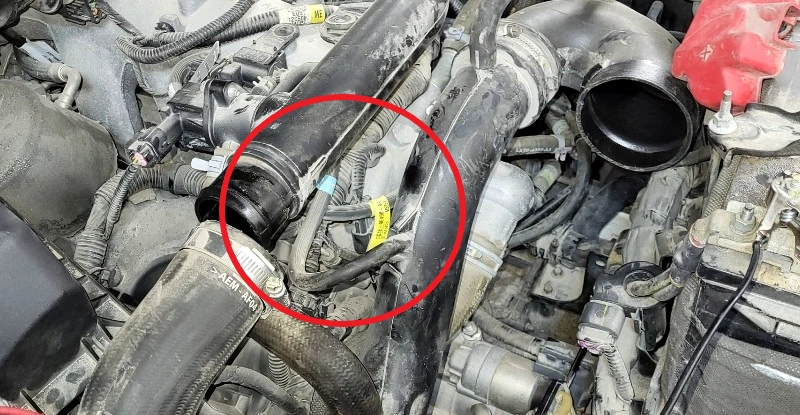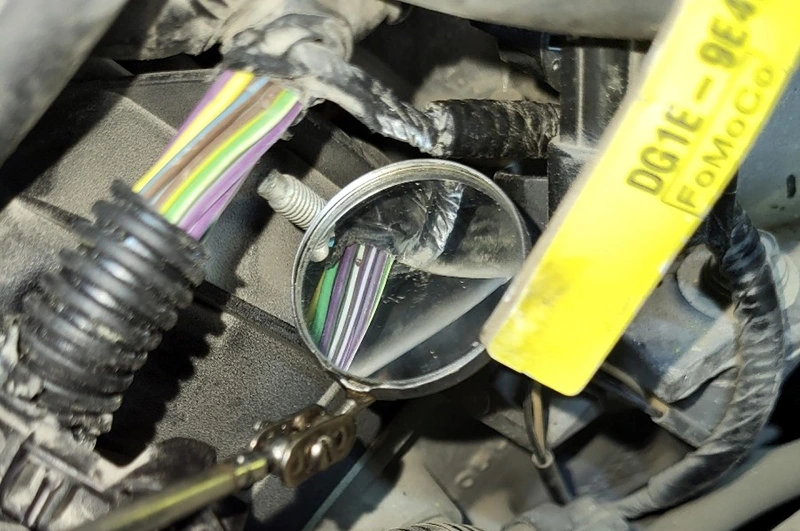This article addresses an intermittent issue encountered with a 2016 Ford Explorer Police Interceptor which was reported by a local first responder. The vehicle was towed in after the customer indicated that the wrench light had illuminated, and that the vehicle was inoperable. Upon initial inspection, I was surprised to find that there were no diagnostic trouble codes, and when I placed the vehicle in gear, it moved without issue.
To gather further information, I consulted with the service writer to determine if there were any additional details not documented on the service ticket. Given that the vehicle demonstrated operational functionality and exhibited no warning lights or codes, I proceeded to conduct an under-hood inspection. It is noteworthy that this vehicle had previously undergone a transmission replacement over one year prior.
During the inspection, the service adviser informed me that he had contacted the customer again. The customer recounted that after stopping to assist a motorist, he returned to his vehicle only to find the wrench light illuminated and the vehicle unable to move forward; it had instead unexpectedly engaged reverse. However, the tow driver reported no complications during the loading process.
My initial visual inspection under the hood did not reveal any apparent issues, and beneath the vehicle, nothing seemed out of place. I then opted to drive the vehicle around the block to monitor its performance. To my satisfaction, the vehicle operated smoothly without any warning lights and shifted properly. I continued to observe it closely during subsequent drives, remaining near the shop to address any potential issues. All Parameter Identification (PID) data appeared normal, and I did not identify any malfunctions.
I retained the vehicle for one week, conducting multiple short drives exceeding 20 miles each, during which time I encountered no problems. The customer subsequently retrieved the vehicle; however, approximately one month later, he returned, stating that the issue had recurred while at the station. After allowing the vehicle to sit for several hours, it returned to normal functionality, although the check engine light illuminated and subsequently turned off. The customer also noted that these issues seemed to coincide with the installation of a Power Transfer Unit (PTU) by a local shop.
I inspected the installation of the PTU and found it to be satisfactory, with no apparent faults. However, I was able to retrieve two historical diagnostic trouble codes: P0768 (Shift Solenoid D Electrical) and P0982 (Shift Solenoid Control Circuit Low). Armed with this information, I proceeded to connect a diagnostic scope to observe the circuit while driving. Disappointingly, all readings appeared within the normal range. The wiring, resistance measurements, and solenoid readings were all compliant with specifications. Due to the absence of clear issues, I considered the possibility of replacing the valve body assembly, particularly since the vehicle was associated with our previous transmission work. I was prepared to order the necessary part when a technician inadvertently moved the vehicle to access the lift. During this movement, the vehicle again engaged reverse abruptly, and the wrench light illuminated, indicating it could not move forward.
Fortunately, my diagnostic leads remained connected, allowing me to initiate further testing. I discovered that the solenoid D circuit was constantly grounded. Upon repositioning the vehicle in the shop, the grounding issue appeared to have resolved itself.
I maintained my meter connection to the grounding circuit from the Powertrain Control Module (PCM), which registered as open, consistent with expectations. After reconnecting the scan tool to monitor the solenoid D PID, I observed that it indicated "not commanded," while my meter displayed "command/grounded." I proceeded to carefully disconnect the PCM, at which point the circuit remained grounded. Subsequently, I disconnected the transmission, but the grounding issue persisted.
As I methodically examined the wire harness, I exercised caution in my handling to avoid losing the source of the grounding issue. While applying gentle pressure to the wires, I observed fluctuations in the meter readings in the circled area near the air intake tube. (Figure 1)

Figure 1
Upon closer inspection, I noted that a valve cover stud, intended to secure the wiring, had inadvertently caused the wire loom to rest against it, resulting in a minor rupture in the insulation. (Figure 2)

Figure 2
I repaired the wire and adjusted the loom to its appropriate position. Furthermore, it appeared that the upper part of the motor had been disassembled and improperly reassembled, which would have been difficult to detect without thorough examination.
Upon completing the necessary repairs, I conducted a test drive and verified that the vehicle exhibited no further issues. Retesting confirmed that the problem had been resolved.
 Certified Transmission
Certified Transmission
